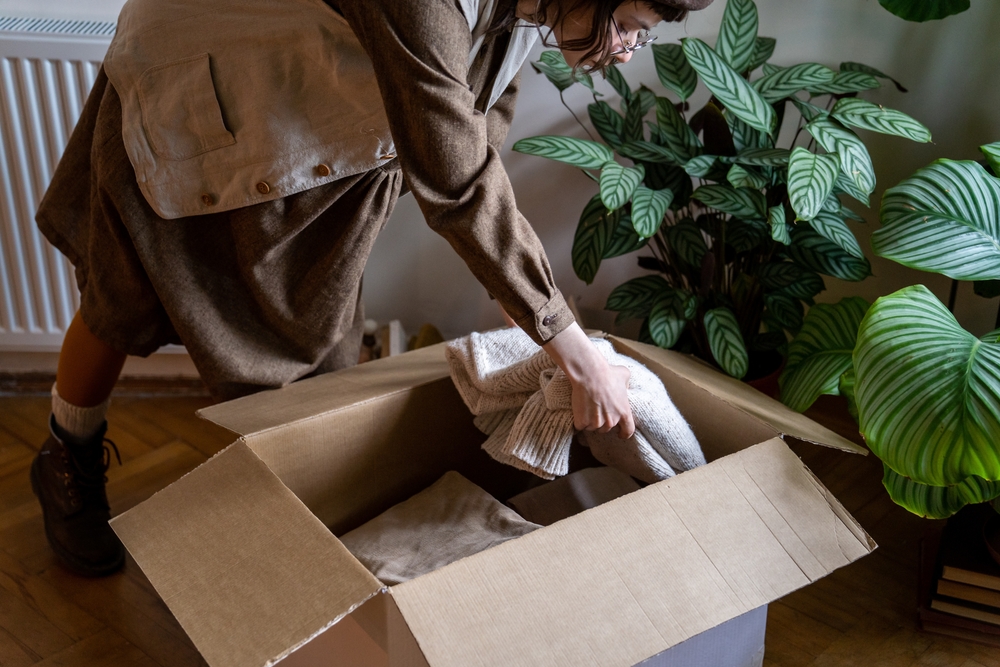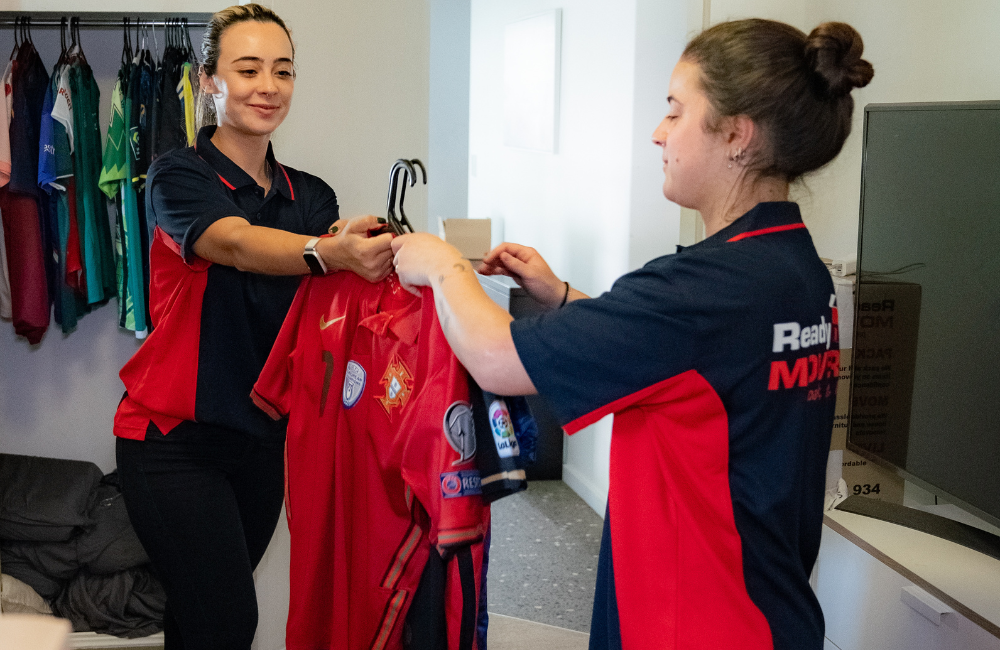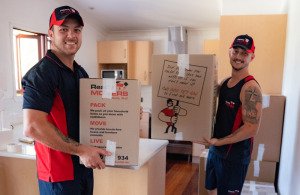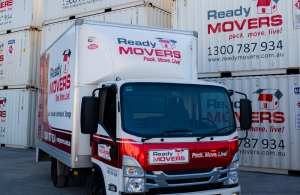When it comes to moving house, hiring a professional removalist service to help with packing and transporting belongings is normal. However, when it comes to more personal items like clothing, it’s perfectly understandable to pack them yourself. Not everyone is comfortable with a stranger going through their wardrobe. With that being said, packing clothes for moving, whether a professional is involved or not, can be a tedious and stressful process.
Luckily, there are tips and strategies you can implement to make the process easier. This article will cover the best way to pack clothes for moving, from how to deal with delicate items to bulky garments and packaging solutions like portable wardrobes. If you’re able to follow our strategies for the best way to pack clothes for moving, it might also save you money when hiring a professional moving service. Our tips will also save you from any headaches because the clothes will all be neatly stored and organised.
Tips For Sorting Clothes Before Packing
Before we dive into our life-saving tips for how to creatively fold away clothes and save space, we have to talk about preparation. The key to the best way to pack clothes for moving is to organise them beforehand.
Organising your wardrobe
Grouping and sorting your clothes is the first step to any successful move. Not only will it help when it comes to packing and then unpacking your clothes in your new home, but it’ll also give you a chance to declutter. There is no one tried-and-true method when it comes to organising clothes. The best strategy will depend on the individual, but we’ve listed a few you can try below.
Season
One commonly suggested tactic for organising clothes before a move is by season. This is useful because it can also help you identify clothing you won’t need for months and pack/store it accordingly. That way, you also have all the in-season clothing together to unpack and organise easily when you do move.
Material
This is another common suggestion when it comes to organising for a move. Sorting by material, separating any natural and cotton fabrics from synthetics, is helpful because they need to be handled and stored differently. This also makes it easier to identify which clothes can be folded and which need to be hung up to prevent creasing.
Type
Sorting by the type of clothing can make it easier when it comes to unpacking down the line. For example, jackets with jackets, shirts with shirts. The only downfall is that it may require more packaging supplies than the season or material methods.
Frequency of use
This style, especially when combined with another organisation method, is great if you’re also planning to scale down your wardrobe. You can easily weed out any items that you have stopped wearing to donate or recycle.
There is no best way to pack clothes for moving. The best method might not even be listed here, or a combination of two. It will depend on the individual and their wardrobe. For example, some people don’t have clothes for certain seasons. This would make organising by seasonal categories difficult.
Scale down & declutter
Moving house is also a great opportunity to review your wardrobe and scale down. Decluttering your wardrobe will also make the move easier. You won’t need to pack away as many clothes and require as many packing supplies.
Any clothes that you have outgrown, don’t fit properly, or haven’t worn in months, you should consider selling or donating. There are many online platforms where you can resell clothes, which might be helpful if you need some extra cash to help with the move.
Always wash your clothes
Before folding or hanging any clothes in a box to be transported away to their new wardrobe, wash them. Freshening up your clothes before moving will prevent any musty odours and mould from growing during storage and transit.
Also, future you will be thankful that you did the laundry in advance! This is especially helpful if you don’t already have laundry utilities connected and ready to go at your new place.
Take inventory
If you have any valuable or sentimental articles of clothing, we also recommend taking inventory. Make a list of all your clothes so you can keep track of where they’re stored, and then you can manually check off the list when you’re unpacking. Keeping a record is also useful in case any items are lost or damaged during transit and you need to make a claim.
Our Best Tips For Packing Clothes For Moving House
Now it’s time to delve into the best way to pack clothes for moving. It all comes down to folding techniques to save space and learning how to deal with the unique challenges, like bulky items. Below, we’ve covered everything you need to know to pack clothes like a pro.
Space Saving Folding Techniques
While learning how to properly fold clothes for a move isn’t as intricate as origami, it should be considered an art form. Generally, the most recommended method for folding clothes is the KonMari method. It’s also easy to learn, quick, and space-efficient.
Here’s a brief overview:
The KonMari method is named after Marie Kondo, the world-famous Japanese tidying expert. For shirts (and any upper garments), it consists of:
- Folding one side toward the centre.
- Folding the other half the same way.
- Folding the article of clothing in half lengthwise, leaving a little gap at the edge.
- Fold the garment in halves or thirds.
For pants and shorts, the instructions are:
- Fold the legs in half.
- Fold the legs again upward toward the waistband, leaving a gap at the edge.
- Then, fold the pants or shorts in halves or thirds.
For any clothing that can be folded, it can be packed away in a general-purpose moving box or vacuum-sealed bag. If the clothing is going to be stored away for long periods of time, we recommend vacuum sealing. Although it isn’t as cost-effective as boxes, it provides better protection against the elements and is more space-efficient.
Hanging Clothes
When it comes to clothes that require hanging during transit, there are a few options available. Garment bags are a popular, cost-effective option. You simply put the article of clothing on a hanger, then put the bag over the top.
Garment bags can also be used outside the moving process. It’s a great way to store valuable garments made from delicate materials in your wardrobe. The other option for hanging clothes would be to invest in portable wardrobes, which we cover later in this article.
Delicate Items
For any delicate items, it’s recommended to store them separately from the rest of your clothes. It’s also recommended to use tissue paper or packing paper to wrap the delicate items in before putting them in a storage box or bag.
The extra layer of protection is crucial during transit. If possible, avoid putting any other objects on top of the box or bag holding the delicate items. Similarly, try not to place the box or bag on a slippery surface.
Bulky Items
Bulky articles of clothing are everyone’s worst enemy when it comes to packing clothes for a move. If you want a space-saving solution, we recommend using vacuum or compression bags. Place the article of clothing, e.g., a jacket or sweater, in the bag and then remove all the air. This will compress the garment as much as possible, making it easier to store during transit.
While vacuum bags are safe for most materials, we always recommend double-checking before use. Vacuum bags can damage certain delicate materials, like cashmere and leather. If you’re in a rush and can’t access any vacuum bags, you can pack the bulky items together with your other folded clothing. Just make sure the heavier, bulkier items are at the bottom of the box. You don’t want them to crush and potentially damage the lighter clothing.
Is A Portable Wardrobe Worth It?
Portable wardrobes, sometimes called port-a-robes and wardrobe boxes, can be a great investment. They’re worth it for people who have a large number of clothes and delicate garments that can’t be folded.
Because portable wardrobes have a built-in metal rail, you can easily hang any delicate clothes to prevent creasing and/or damage. It’s also possible to store extra items underneath the hanging clothes, like shoes or accessories.
Portable wardrobes are also designed to be easily carried with handles on both sides. They’re typically easier to move than normal, general-purpose moving boxes. Although the exact price will depend on the store, they are usually pretty affordable. Because the wardrobe boxes are made from durable cardboard and metal that are designed to fold down, they can be easily stored away for later use. When it comes to packing clothes for moving, they’re one of the most effective.
Hire Ready Movers For Hassle-Free Moves
Whether you’re searching for removalists in Brisbane or any other major Australian city, Ready Movers has you covered. Our professional team has helped over 20,000 clients and counting transport their belongings, including packing and moving their clothes.
Ready Movers offers a comprehensive packing and moving service designed to make the moving process as stress-free as possible. Our team can handle supplying packaging supplies, packing/unpacking an entire home, furniture assembly/disassembly and more.
Our services are also flexible. You tell us what you need, and we’ll tailor our packing and moving services to you. When you choose Ready Movers, you also get the guarantee that you’re working with a team with a wealth of experience behind its back, professionally trained, and accredited by AFRA.
Ensure your move is a hassle-free success by requesting a quote online. You can also contact us by phone on 1300 787 934 or email nostress@readymovers.com.au. Our team would love to hear from you.







